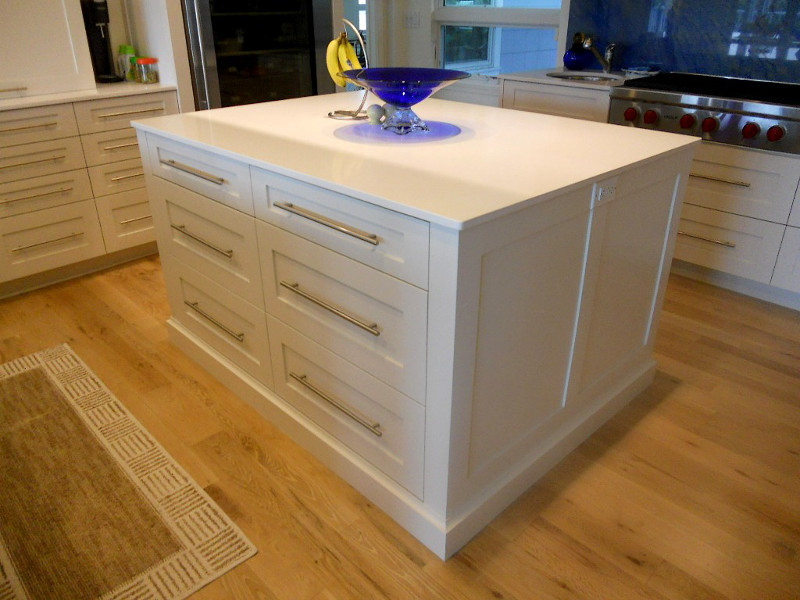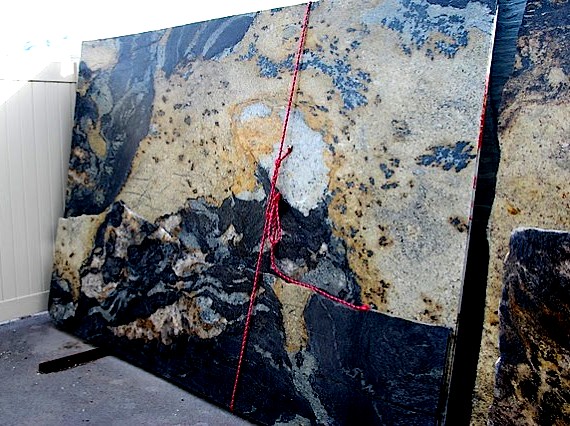The last few posts we have been exploring the big questions I get from clients who are in the market for a new kitchen. Today we are up to #4, and it's a biggie. What counter top should we get? Counter tops are a main component of the kitchen. They have to look right but more importantly they must stand up to daily use. During the 50s, 60s and 70s , other than the odd wood or tile counter top, most of us had laminate counters. Formica ruled the roost. To be fair, laminates have come a long way and are quite popular in Europe. They are not as indestructible as granite or quartz but the price is right. Truth be told, back in the day, it was not unheard of to have a laminate top last 30 years or more!
Remember those "Boomerang" Formica counter tops? If not, then you might find one now in a Mid-Century Modern style kitchen of 2013.
Today my clients know about granite but what's this quartz all about ? Here's what I tell them: If you love the uniqueness and natural variations of granite then it's the top for you. If you can't stand that and you prefer consistent color and/or pattern then quartz is for you. Quartz is man-made and is about 93% quartz with the other 7% being the resins that hold it all together. Performance wise you can't do better than quartz. It is non-pourous, very hard, heat resistant and does not require maintenance. When it comes to price, at least in Florida, the price is comparable to granite. Both materials are generally available in 2cm or 3cm material. 2cm is about 3/4" thick. You can use it like that if you like the thin look but typically it gets doubled up to give you your 1 1/2" standard counter top thickness. If you're planning a matching backsplash this is a good option since it can be 3/4". Yes, the counter edge will have a seam in the middle but if your fabricator is worth his salt, you shouldn't really notice it. A 3cm thickness will give you 1 1/4" thick counter top with no seam but it makes for a very thick back splash which may not leave you enough room for your faucet. My favorite brands for quartz are Cambria because of the color selection and because all the colors are the same price. That makes it easy! Cambria is also made in the USA. I also love Silestone which can be a little more expensive but is cutting edge when it comes to new textures and technologies. Silestone is made in Spain and features their trademark Microban which enhances the antibacterial nature of quartz even more. Granite can come from South America, Mexico, Europe and even India. If opting for granite you'll need to make a trip to the yard to select your slabs since they vary so much. If you need help deciding you know where to find me!
Next up: Tip #5: Glass Doors, Solid Doors or Open Shelves?



